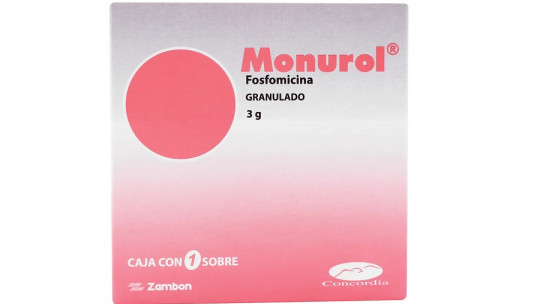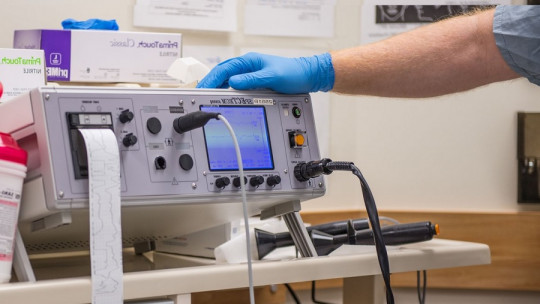Insomnia is a very prevalent disorder among the general population that is fundamentally characterized by a reduction in the quality or quality of sleep, which is why it usually causes discomfort and negatively affects the daily lives of those who suffer from it. Therefore, it is important to look for a good treatment for insomnia.
Daridorexant is a drug that has been developed to treat insomnia , being a medication belonging to the category of “orexin receptor antagonists”. The main action of this medication is to block the mechanism of action of a substance in the brain that causes wakefulness.
In this article we will talk in greater detail about what this medication for insomnia consists of and then what are the main alternative treatments to pharmacology that are usually used to treat this sleep disorder and that do not have side effects.
What is daridorexant?
Daridorexant is a drug used, under medical supervision, to treat insomnia This medication belongs to the category of “orexin receptor antagonists”, also known as hypocretin, which is an exciting hormone of the central nervous system. The main action of this medication is to block the mechanism of action of a substance in the brain that causes wakefulness.
It should be noted that in January 2022, daridorexant was approved in the United States for use under medical prescription, becoming available in May of that same year. Likewise, the European Union approved this medication in April 2022, thus being the first orexin receptor antagonist that has become available on the European continent.
According to some research that has been carried out regarding the use of daridorexant, This medication produces fewer side effects than other medications commonly prescribed for insomnia and also does not create dependence or tolerance, which is why it offers promising benefits.
However, it is important that this medication is supervised by a doctor because its improper use could cause various health problems, as we will see in more detail soon. On the other hand, daridorexant It is usually sold in tablets to be taken orally and is normally taken once a day (approximately 30 minutes before bedtime). This medication can be taken with or without food, although if taken on an empty stomach it will act more quickly and does not cause harm in these cases.
Normally, daridorexant begins to take effect in the treatment of insomnia within 7-10 days after starting to be used. On the other hand, you should not take this medication when you sleep for less than 7 hours because you could become excessively drowsy and this would be dangerous if you had to drive or carry out activities that require certain levels of sleep. alert.
Possible side effects of daridorexant
Daridorexant should be used exclusively under medical prescription and supervision because it could cause some side effects. There is also a series of precautions that should be taken into account before consuming it and that the specialist should know:
Now that we have seen some precautions to take into account before taking daridorexant, it is time to explain what they are. the side effects that this medication could cause :
There’s others more serious side effects , although also less frequent, that could occur; It is important in this type of case to call the doctor immediately:
For all this, It is important whenever this medication is used under medical prescription and without exceeding the doses, since an overdose of this medication could cause certain health problems, as we will see below.
- Related article: “The 24 branches of Medicine (and how they try to cure patients)”
Most common symptoms of a daridorexant overdose
When a person takes daridorexant in high doses or above the amounts prescribed by the professional or even if it has been taken more frequently than it should, a series of complications associated with an overdose of this medication, the most common being the following:
- Excessive sleepiness.
- Fatigue.
- Headache.
- Problems of attention and concentration.
- Loss of voluntary muscle control.
- Inability to move and/or speak.
- Constipation.
- Muscular weakness.
It is important that each patient has written down all the medications they are taking both with a prescription and without it, in order to adequately inform the family doctor or emergency doctor in case of suffering any complications and thus be able to receive the most appropriate guidelines based on each particular case.
- You may be interested: “How do neurons work?”
Treatments against insomnia
In order to diagnose insomnia, it is necessary that this difficulty in initiating or maintaining sleep occurs for several nights a week and over 3 months or even more.
The prevalence of insomnia worldwide is quite notable, which is why it has become a very relevant health problem for different health organizations. When it comes to treating insomnia, there are different treatments, highlighting the importance of carrying out correct sleep hygiene, as we will see below.
1. Sleep hygiene
Carrying out proper sleep hygiene can help it occur. a decrease in those habits that could be interfering with proper rest , it is important that they be replaced by a series of habits that facilitate sleep. The most useful tips when it comes to having correct sleep hygiene are the following:
- Avoid or limit the consumption of stimulating drinks, such as energy drinks or coffee.
- Try to go to bed and get up at the same time every day or as much as possible.
- Do physical exercise regularly but never before going to bed.
- Do not carry out tasks incompatible with rest in the bedroom.
- Control the temperature, light or noise in the room before going to bed.
- Seek professional help if you have concerns or problems that prevent you from resting.
- Do not eat large meals during dinner and do not eat dinner too late.
2. Stimulate control
Stimulus control is usually included in sleep hygiene or both are used in a complementary way to improve results. Some of the most common recommendations to carry out correct stimulus control to be able to sleep well they are the following:
- Perform a series of routine tasks that are associated with the action of lying down to sleep that facilitate sleep.
- Do not stay awake in bed tossing and turning if you cannot sleep for more than 20 minutes.
- Go to bed when you are really sleepy.
- Have regular times for going to sleep and waking up.
- Do not carry out activities in the bedroom that keep us alert.
- Avoid using screens or mobile phones at least 2 hours before bedtime (it is better to read a book).
3. Relaxation techniques
Among the main relaxation techniques that we can use against insomnia we can highlight progressive relaxation (We can find manuals or articles online explaining step by step how to carry out this technique). This technique has proven to be effective as a treatment for insomnia in adults, and to help with childhood insomnia, although its effectiveness is less proven. Likewise, as relaxation techniques against insomnia, we can also include others such as abdominal breathing.
- You may be interested: “7 easy relaxation techniques to combat stress”
4. Chronotherapy
Chronotherapy, also known as “sleep restriction”, is usually used in combination with relaxation techniques, sleep hygiene and stimulus control, since if it is used alone it is less likely to obtain good results.
The way to carry out this technique against insomnia basically consists of delay bedtime until the total time spent in bed is approximately the time spent actually sleeping and avoid lying in bed tossing and turning when you can’t fall asleep. Meanwhile, you can read a book relaxing in another room or in another room of the house until you feel sleepy. It is also advisable to follow all of the above recommendations (e.g. sleep hygiene).









